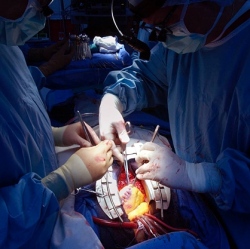
A new batteryless cardiac pacemaker controlled by a self-winding mechanism that is powered by heart motion has been developed in the Cardiovascular Engineering Group at ARTORG, University of Bern. The device was presented at European Society of Cardiology Congress by Adrian Zurbuchen.
“Batteries are a limiting factor in today’s medical implants,” he said. “Once they reach a critically low energy level, physicians [are] forced to replace a correctly functioning medical device in a surgical intervention. This is an unpleasant scenario which increases costs and the risk of complications for patients.”
Four years ago Professor Rolf Vogel, a cardiologist and engineer at the University of Bern, had the idea of using a self-winding wristwatch mechanism to harvest the energy of heart motion. “The heart seems to be a very promising energy source because its contractions are repetitive and present for 24 hours a day, 7 days a week,” said Zurbuchen. ” Furthermore the automatic clockwork, invented in the year 1777, has a good reputation as a reliable technology to scavenge energy from motion.”
The researchers’ first prototype is based on a commercially available automatic wristwatch. All unnecessary parts were removed to reduce weight and size. They also developed a custom-made housing with eyelets that allows suturing the device directly onto the myocardium.
